(Page créée avec « This conversion is adapted to the needs of an itinerant workshop (mobile and small), it can work wood and metal and is sized to make small objects such as knives or restor... ») |
(Page créée avec « If you too would like to start converting a Singer machine into a multifunction pedalboard, you can download the PDF instructions and the 3D file of the motor [https://www... ») |
||
| Ligne 25 : | Ligne 25 : | ||
| − | + | If you too would like to start converting a Singer machine into a multifunction pedalboard, you can download the PDF instructions and the 3D file of the motor [https://www.dropbox.com/sh/n9g23s568w497re/AACqXc3dew4HvqRuRkWajElca?dl=0&preview=Transformation+machine+singer.pdf here]. | |
Version du 9 juillet 2024 à 13:32
Introduction
We wanted a manufacturing workshop that could be deployed on any site: using the raw materials available on site to transform them into objects or building materials without depending on infrastructure or access to electricity. We want to design a self-sufficient workshop, limit our electricity consumption and revisit a neglected energy source: muscular energy. To achieve this, we have chosen to hack into the emblem of the pedal-powered machine: the Singer sewing machine, marketed in the United States in 1851, a technological flagship that was previously adopted by the majority of households.
We've produced a guide to help you convert a machine driven by a crank and connecting rod system into a machine with a unidirectional crankset that can be used to connect tools, household appliances and, more generally, anything that turns.
The machine presented here is a prototype that feeds into a global reflection on the use of muscular energy. We're looking to see what applications pedal-powered systems could have in everyday life. We are not working on machine efficiency comparable to that of industrial machinery, but on the rational use of energy.
This conversion is adapted to the needs of an itinerant workshop (mobile and small), it can work wood and metal and is sized to make small objects such as knives or restore old tools. For larger dimensions of the same type of machine, take a look at the instructions for the muscle-powered motor produced during the residency at Maison Forte.
If you too would like to start converting a Singer machine into a multifunction pedalboard, you can download the PDF instructions and the 3D file of the motor here.
Youtube
Étape 1 - Aides mises en ligne
- Tutoriel Chemins de faire
https://cheminsdefaire.fr/pedalier-multifonctions/
- Notice de fabrication en PDF et fichier 3D :
https://www.dropbox.com/sh/n9g23s568w497re/AACqXc3dew4HvqRuRkWajElca?dl=0
- Vidéos de montage
La machine musculaire - sur la chaîne Youtube de Chemins de faire
Published
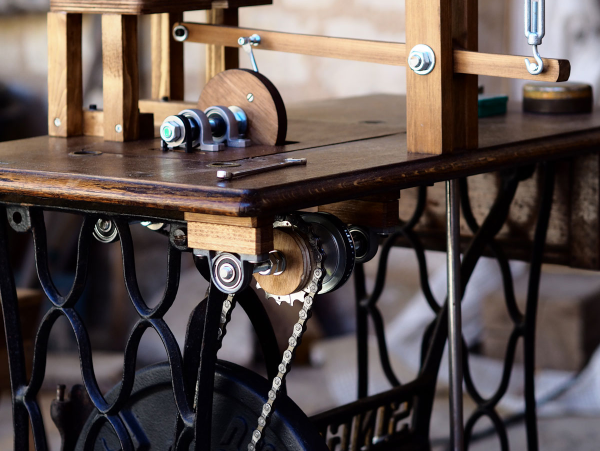
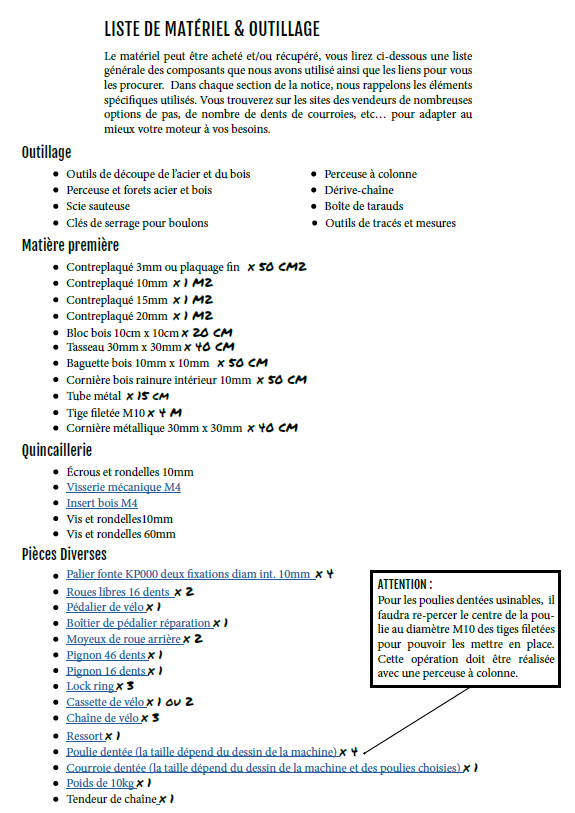
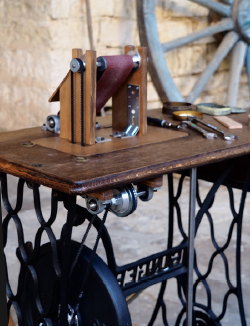
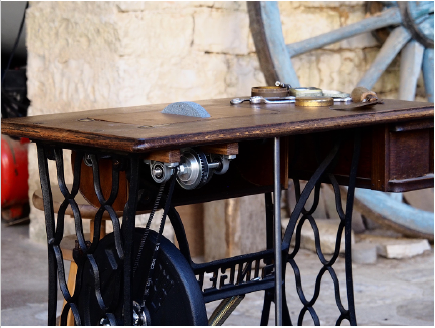
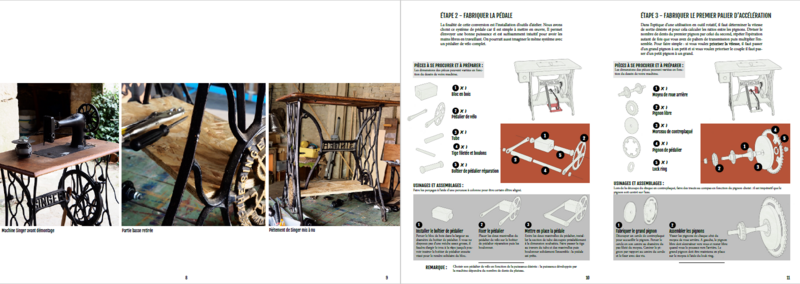
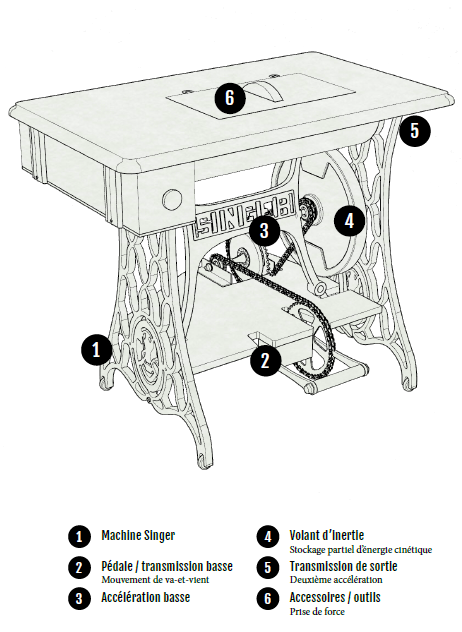
 Français
Français English
English Deutsch
Deutsch Español
Español Italiano
Italiano Português
Português